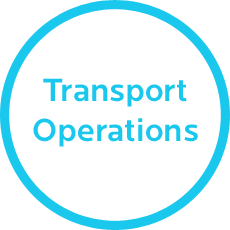STGO Driver Awareness & Abnormal Loads
STGO Training • Rules & Regulations • Abnormal Loads • Legislative Requirements
Vehicles most likely to be used under an STGO, are:
- Abnormal loads which can’t be divided into 2 or more loads to be transported by road.
- Mobile cranes: specially built - or adapted - for lifting operations.
- Engineering plant: a moveable piece of plant or equipment which is a motor vehicle or trailer specially built for engineering operations.
- Road recovery vehicles: vehicles that are specially built for recovering broken-down vehicles.
Under Construction & Use - when trailers are built and normally used to carry abnormal loads of great length - they can be longer (but not wider) than the normal legal maximum. There’s no limit to the number of items of exceptional length that can be carried. Depending on the size of load - if certain conditions are met - Construction & Use rules & regulations also allow loads to overhang the front, rear and sides of vehicles.
Who Should Attend STGO Training
Drivers who require training and current knowledge updates on STGO rules & regulations.
Benefits of Attending
It is the responsibility of hauliers to satisfy themselves that their own personnel are sufficiently competent to undertake the task of driving abnormal loads or abnormal vehicles. Competent means that they are suitably trained and/or experienced for the role. Attending the STGO training course will give you an understanding of the rules and regulations regarding the transporting of abnormal or indivisible loads.
Course Content
- Driver and vehicle legislative requirements
- Current codes of practice and industry best practices
- How to prepare the vehicle(s) and load(s) before departure
- How to effectively communicate with all third parties
- How to position loads and vehicles appropriately on the road
- How to respond appropriately to emergencies, incidents, unexpected situations and breakdowns
- How to carry out post-operative checks.









